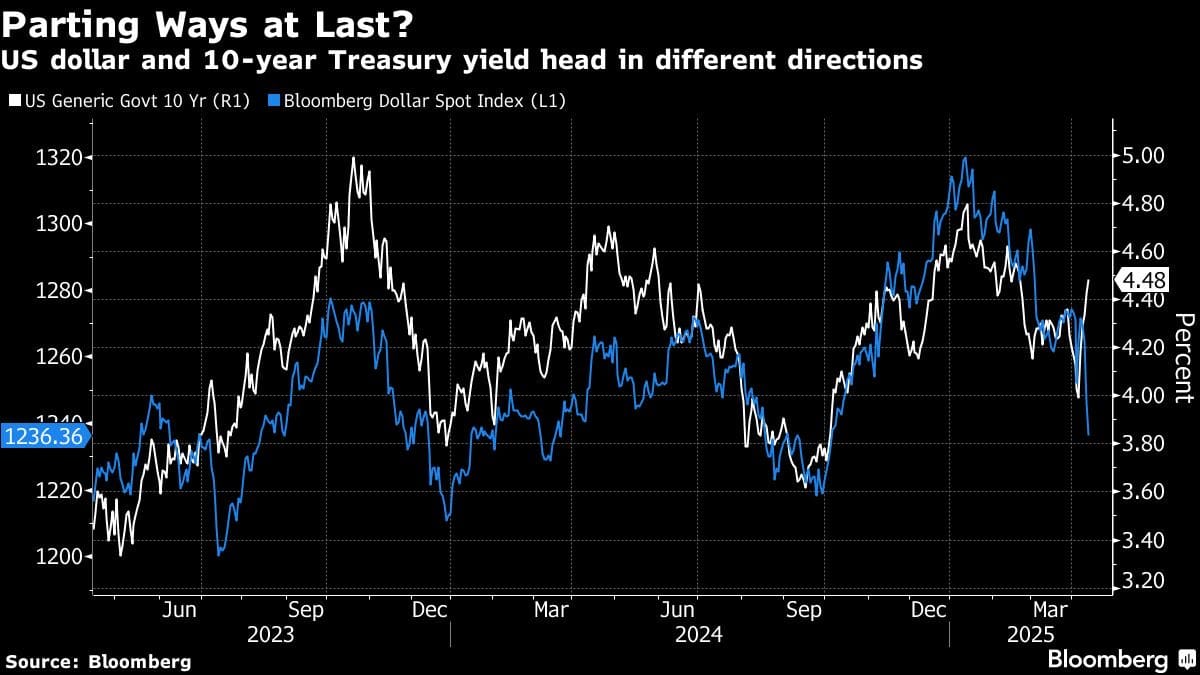Dollar-Yield Dislocation Signals Brewing Systemic Risk


A rare and historically significant macro dislocation is unfolding in global markets. The divergence between the U.S. Dollar Index (DXY) and the 10-year Treasury yield is raising red flags among analysts and institutional investors.
Over the past several weeks, Treasury yields have risen (white line) while the U.S. dollar has weakened (blue line)—a pattern that does not usually occur in tandem. This abnormal behavior in markets has preceded past episodes of systemic stress, including:
- The COVID crash in March 2020
- The Eurozone crisis in 2011
- The post-GFC dollar rebound in 2009
Understanding the Dislocation
Two primary explanations are being discussed on trading floors:
- Foreign Selling of U.S. Treasuries
Countries under economic pressure—such as China and Japan—may be liquidating their UST holdings either to defend their currencies or to repatriate capital. This pushes yields higher while putting downward pressure on the dollar. - Loss of Confidence in U.S. Fiscal or Political Credibility
If markets believe that the Federal Reserve will be forced to monetize deficits through stealth quantitative easing (QE) or yield curve control, investors may demand higher returns for holding U.S. debt. Simultaneously, the dollar weakens due to the anticipated dilution of its value.
Why 2025 Feels Different
Today’s backdrop is even more precarious due to:
- A looming UST rollover wall, with trillions in refinancing ahead
- Inflationary pressure driven by new tariff policies
- Global FX stress, as currencies like the Swiss Franc (CHF), Chinese Yuan (CNH), and Japanese Yen (JPY) break critical technical levels
This setup could be the market pre-pricing a looming policy breakdown or credit event.
Conclusion: This is Not Market Noise
This dislocation isn’t a coincidence or background volatility. It’s a potential early warning of either:
- Imminent liquidity stress, or
- An approaching endgame reaction in U.S. monetary policy
Historically, such dynamics culminate in some form of forced intervention, whether by central banks, fiscal authorities, or coordinated global action.
Investors should not ignore the signal.



